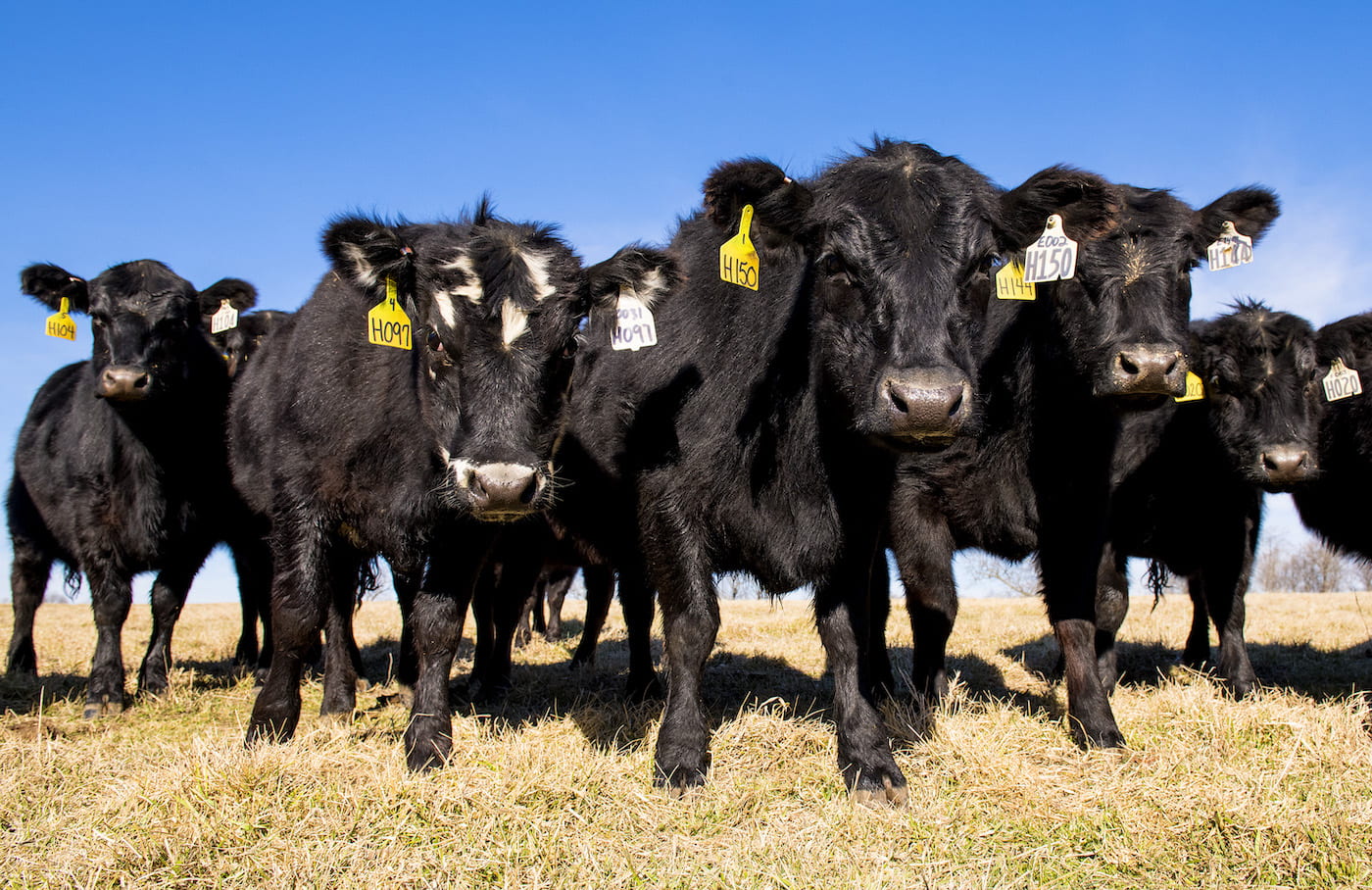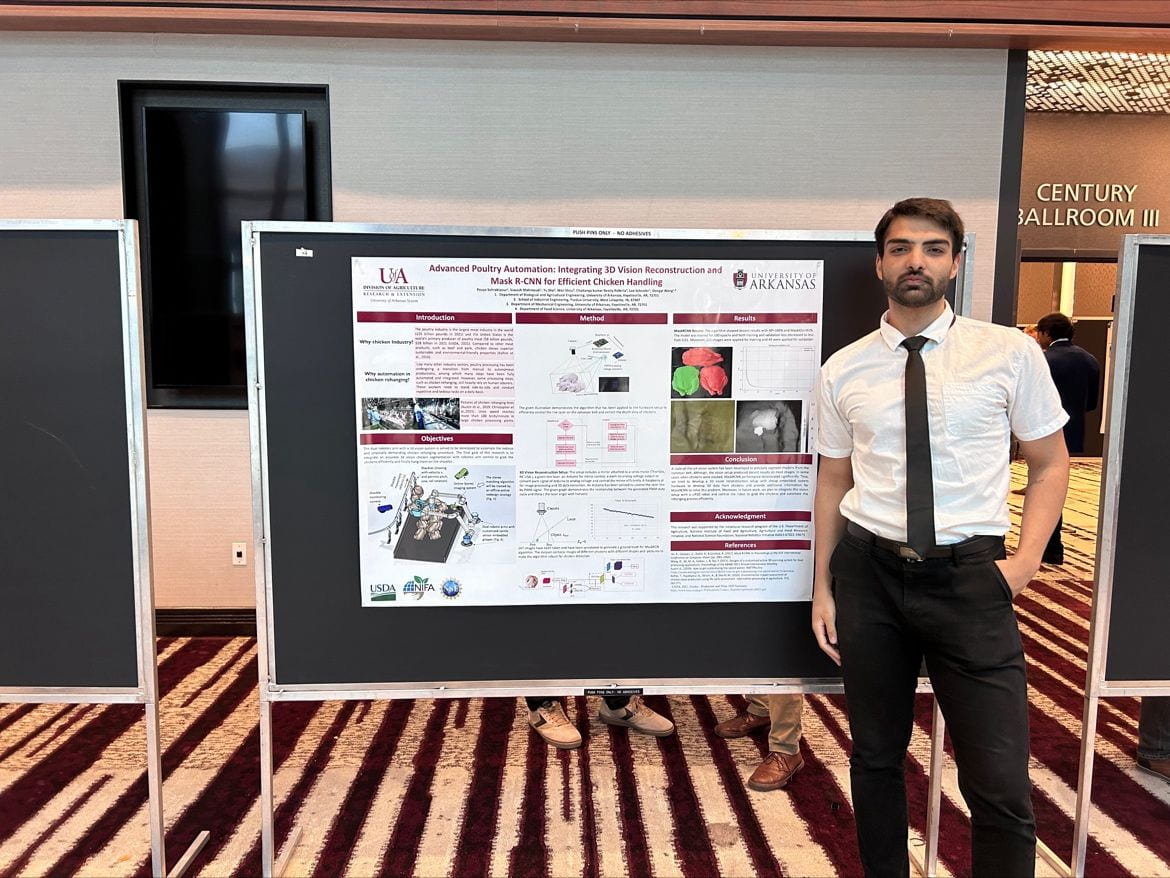Study Shows No Negative Health Effects on Limit-Fed Diet in ‘High-Risk’ Cattle
Restricted diets showed no negative health effects in newly received cattle
By John Lovett – Dec. 19, 2022

MEDIA CONTACT
John Lovett
U of A System Division of Agriculture
Arkansas Agricultural Experiment Station
(479) 763-5929 | jlovett@uada.edu
FAYETTEVILLE, Ark. — Placing newly received, “high-risk” cattle on a limit-fed diet may result in greater performance with no adverse health effects, according to a study by the Arkansas Agricultural Experiment Station.
Less money spent on grain is an additional benefit to a limit-fed diet, said Daniel Rivera, associate professor of animal science with the experiment station, the research arm of the University of Arkansas System Division of Agriculture. Rivera is also director of the Division of Agriculture’s Southwest Research and Extension Center in Hope where the study was conducted.
Limit feeding restricts the amount of feed an animal receives but provides sufficient energy to achieve a targeted rate of weight gain. The practice has been shown to reduce waste and improve feed efficiency, Rivera said.
“One of the concerns people have with limit-feeding growing animals before they go to a feedlot finishing program is the fear it will lead to digestive upsets because they were restricted and then go into a sort of all-you-can-eat buffet,” Rivera said. “But that was not the case in our study.”
“High-risk” cattle include those with no history of vaccination or that were transported for an extended period and blended with other lots at a sale barn. Cattle could also fall into the “high risk” category if there is a lack of information about their past. Cattle that have undergone a preconditioning period with vaccinations and yearling cattle from a single source with a known health record are often considered “low-risk.”
Rivera said that typical management of “high-risk” cattle has often allowed for high levels of hay or forage. Conventional wisdom is that offering a feed that cattle are accustomed to — hay in this case — makes the transition to a milled diet easier. Rivera said data conflict regarding this topic, however, with some researchers noting that higher energy and less roughage results in better performance but greater health problems. One theory is that the energy is typically in the form of starch, which can result in sub-clinical acidosis, thereby increasing health problems. The current Arkansas study examined limited feeding complete feed pellets made up of high levels of byproducts and lower starch content.
The study compared recently received cattle given 1.75 percent of their body weight in a grain byproduct pelleted feed with those given 2.25 percent of their body weight. Another group (the control group) was assigned 2 percent of their body weight in grain by product pellets and free access to Bermuda grass hay. All diets provided an antibiotic to control parasites. The study began in January 2022.
At about 2.8 pounds a day, the average daily weight gain for cows on a restricted diet of 2.25 percent body weight in grain pellets and no hay, was the same as those given free access to hay, along with 2 percent of their body weight in grain pellets. Newly received cattle on 1.75 percent body weight in grain pellets and no hay put on slightly less than 2 pounds per day.
Rivera noted that more work was needed to confirm the study’s findings. Cattle on restricted diets which were not responding well to treatment would recover faster once isolated from the group to have easier access to their rations. Rivera said animals tend to push out animals that show signs of weakness, which keeps them from accessing their feed and gaining energy to recover from illnesses.
The study was conducted at the Southwest Research and Extension Center in collaboration with Elanco Animal Health and Livestock Nutrition Center to gain information for producers on management practices for “high-risk” cattle. Following the 63-day study of 168 newly received cattle, results showed slightly better feed-conversion rates for the most restricted diet with only marginally lower average daily weight gain.
Rivera put the 168 yearling cows through a two-month preconditioning phase, including vaccination against respiratory and clostridial pathogens, deworming and treatment with long-acting antibiotics. The animals were also administered a growth-promoting implant. The cattle averaged 470 pounds when received from several sale barns in Texas and Arkansas. They came in two shipments one week apart. About half of them were bulls that required castration, and the other half were steers.
Cows were randomly assigned to pens containing seven cattle each. The three diet options were assigned to eight pens each. The animals were checked daily for signs of respiratory disease, and symptomatic animals were treated with antimicrobial therapy. Rivera said the cattle that did not initially respond to the treatment were separated and then able to regain health with easier access to feed. The cattle were fed twice daily and weighed on days 0, 21, 42, and 63 before being shipped to a feedlot.
To learn more about the Division of Agriculture research, visit the Arkansas Agricultural Experiment Station website: https://aaes.uada.edu. Follow us on Twitter at @ArkAgResearch and Instagram at @ArkAgResearch.
To learn about Extension Programs in Arkansas, contact your local Cooperative Extension Service agent or visit https://uaex.uada.edu/. Follow us on Twitter at @AR_Extension.
To learn more about the Division of Agriculture, visit https://uada.edu/. Follow us on Twitter at @AgInArk.
About the Division of Agriculture
The University of Arkansas System Division of Agriculture’s mission is to strengthen agriculture, communities, and families by connecting trusted research to the adoption of best practices. Through the Agricultural Experiment Station and the Cooperative Extension Service, the Division of Agriculture conducts research and extension work within the nation’s historic land grant education system.
The Division of Agriculture is one of 20 entities within the University of Arkansas System. It has offices in all 75 counties in Arkansas and faculty on five system campuses.
The University of Arkansas System Division of Agriculture offers all its Extension and Research programs and services without regard to race, color, sex, gender identity, sexual orientation, national origin, religion, age, disability, marital or veteran status, genetic information, or any other legally protected status, and is an Affirmative Action/Equal Opportunity Employer.
MEDIA CONTACT
John Lovett
U of A System Division of Agriculture
Arkansas Agricultural Experiment Station
(479) 763-5929 | jlovett@uada.edu




